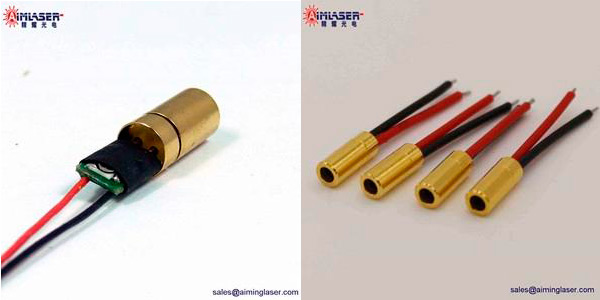The full name of VCSEL is Vertical-Cavity Surface-Emitting Laser, which is a kind of semiconductor laser. Currently, most VCSELs are based on gallium arsenide semiconductor, and the emission wavelength is mainly in the near-infrared band. It is a laser that emits laser light perpendicular to the surface of the substrate. Multiple lasers can be arranged in multiple directions on the substrate to form a parallel light source or an area array light source. It is one of the main light sources in the field of optical fiber communication or optical sensing.
VCSEL is a kind of semiconductor laser. Its working principle is essentially the same as that of other semiconductor lasers, but there are some differences in the structural design, such as the difference between the laser output surface and the edge-emitting semiconductor laser. Laser is a general term for generating optical oscillators and optical amplifiers by using photon stimulated emission caused by electron-optical transitions in semiconductors. The laser generation also needs to meet the following three basic conditions: 1. Establish the inversion distribution of carriers in the active region 2. A suitable resonator allows the stimulated radiation to be fed back multiple times to form a laser oscillation; 3. Provide a sufficiently strong current injection so that the optical gain is greater than or equal to the sum of various losses and meets a certain current threshold condition.

First, the active layer is very small, so that a very low working threshold can be obtained. If the material technology is developed, it can be expected that a very low threshold or even no threshold light-emitting device;
Second, the wavelength and threshold are relatively insensitive to temperature changes (of course, VCSEL itself is also a type of semiconductor laser, so it cannot escape the fate of temperature influence on it. The temperature drift coefficient of its wavelength relative to temperature changes is about 0.06 nm/ ℃, which is much smaller than 0.3 nm/℃ of FP laser.);
Third, magnitude of the cavity length is similar to the wavelength, or even smaller (half-wavelength magnitude), so the longitudinal mode interval is large, and single longitudinal mode output can be realized;
Forth, a larger relaxation oscillation frequency can be obtained, thereby achieving a higher modulation frequency;
Fifth, outgoing circular light spot, easy to couple with optical fiber;
Sixth, the package is simple and can form a two-dimensional laser array;
Seventh, the expected working life is 100,000 hours and above.
With the penetration of VCSEL commercialization into various optical communication fields, in order to meet the application in various scenarios, on the one hand, high speed, low power consumption, and wide operating temperature range have become a new direction for the optimization and development of optical communication VCSELs. VCSEL lasers have high modulation bandwidth and transmission rate in communication; lower power consumption; higher transmission channel density and multi-level modulation technology; wider operating temperature range; wider coverage band. On the other hand, VCSELs have begun to show their advantages in power consumption, manufacturing cost, integration, heat dissipation, etc. due to their unique structural characteristics, and are widely used in industrial and consumer electronics fields, becoming the darling of near-infrared optical sensing in various fields.

